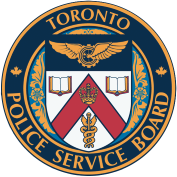
XIII AI-013 – Speed Detection Devices
|
REPORTING REQUIREMENT |
|
|
LEGISLATION |
Police Services Act, R.S.O. 1990, c.P.15, as amended, s. 31(1)(c). Adequacy & Effectiveness of Police Services, O. Reg. 3/99. Occupational Health and Safety Act |
Traffic enforcement and the safety of road users are important elements of public safety and are statutorily required. In this regard, positive outcomes depend on the proper and safe operation of speed detection devices, and the provision of standardized training in the safe, effective and consistent use of speed detection devices.
It is, therefore, the policy of the Toronto Police Services Board that:
- The Chief of Police will ensure the provision of speed detection devices that:
- comply with the current NHTSA performance standards adopted by the International Association of Chiefs of Police (IACP) and entitled, “Speed Measuring Device Performance Specifications: Down-The-Road Radar Module” (DOT HS 809-812, June 2004, Technical Manual or its successor versions); and, “Speed Measuring Device Performance Specifications: Lidar Module” (DOT HS 809 811, June 2004, Technical Manual or its successor versions);
- do not exceed the current 50W/m2 occupational exposure limits (formerly expressed as 5mW/cm2) in compliance with the Occupational Exposure Limits established by Health Canada’s Safety Code 6, 2009 and adopted by Ontario Ministry of Labour's Health and Safety Guidance Note "Radiofrequency and Microwave Radiation in the Workplace”3 and their successors;
- are tested and certified initially by the manufacturer to be in accordance with the above NHTSA performance standards and similarly tested and certified following any major repair; and
- comply with any other performance standards for speed detection radar devices and emission safety units as set out in the Ontario Ministry of Labour’s Health and Safety Guideline;
- The Chief of Police will ensure that speed detection devices are tested for accuracy upon set-up;
- The Chief of Police will ensure that speed detection devices are tested and certified initially and following any repair or maintenance in accordance with the National Highway Traffic Safety Administration standards;
- The Chief of Police will ensure that training and information are provided on the use of speed detection devices;
- The Chief of Police will ensure that each member uses, maintains and cares for the speed detection devices provided to them in accordance with the standards established by the Minister;
- The Chief of Police will ensure that police officers do not:
- use speed detection devices unless the member has successfully completed the required training course(s) delivered by a qualified trainer;
- have speed detection devices transmitting when not in use; and
- direct the speed detection devices towards any part of the body, specifically the head and groin areas.
- The Chief of Police will ensure that, at least every thirty-six months, every operator who may be required to use speed detection devices successfully completes an accredited or prescribed training course by a qualified Instructor that reviews the topics covered in the initial accredited/prescribed training course, including updates on changes in case law, new technological developments and/or operating procedures; and
- The Chief of Police will ensure that police officers receive information regarding the Model Minimum Performance Specifications for Police Traffic Radar Devices DOT HS 808-069, Model Minimum Performance Specifications for Lidar Speed Measurement Devices DOT HS 809 239, Health Canada’s Safety Code 6 and the OHSA including the Ontario Ministry of Labour's Health and Safety Guideline "Radiofrequency and Microwave Radiation in the Workplace;” and on the Ontario Police Health and Safety Committee (OPHSC) Guidance Note #8 entitled “High Visibility Garments” (or successor versions of any of these).
adequacy standards, administration and infrastructure, equipment and uniform, traffic, health and safety